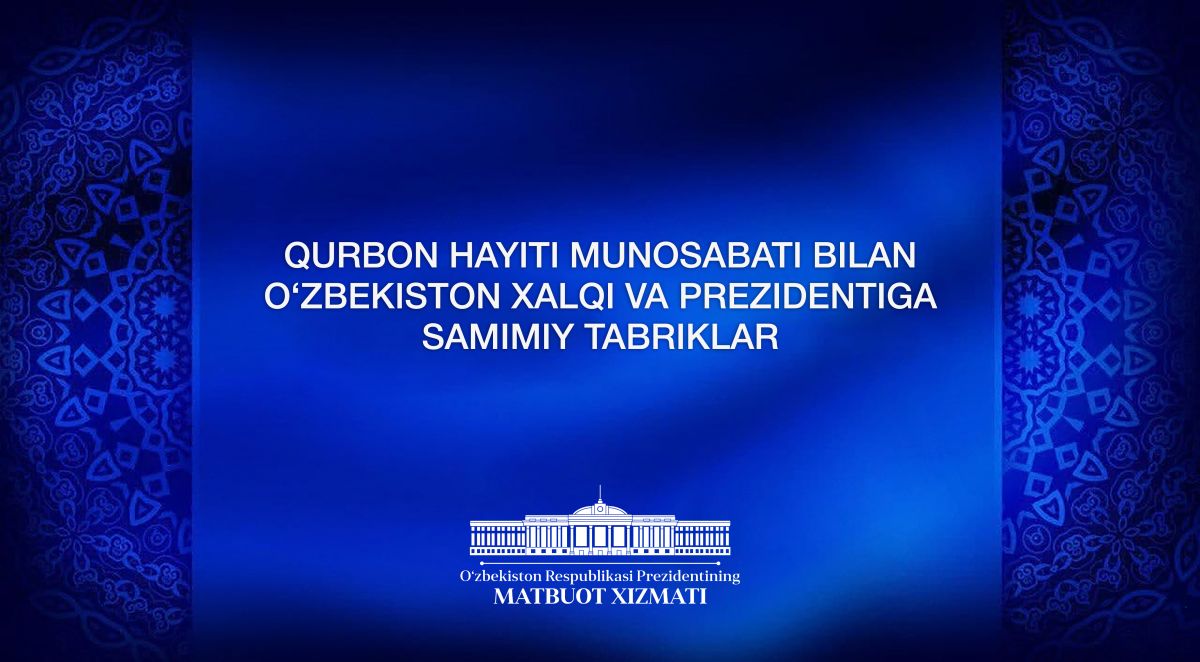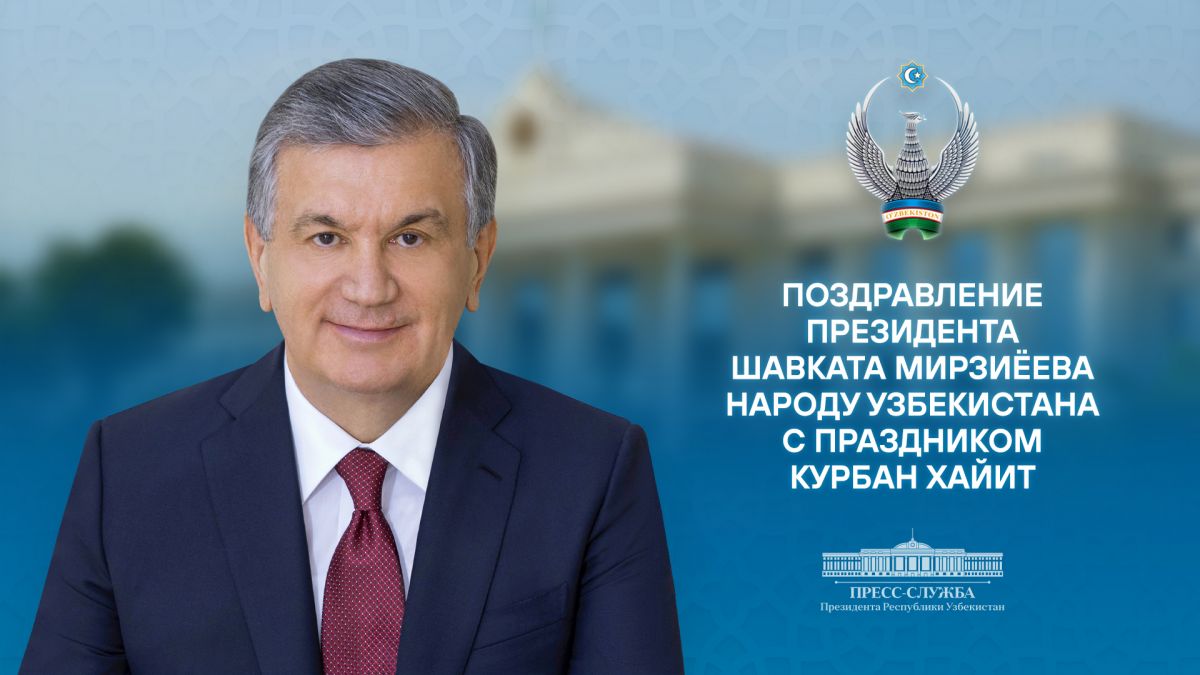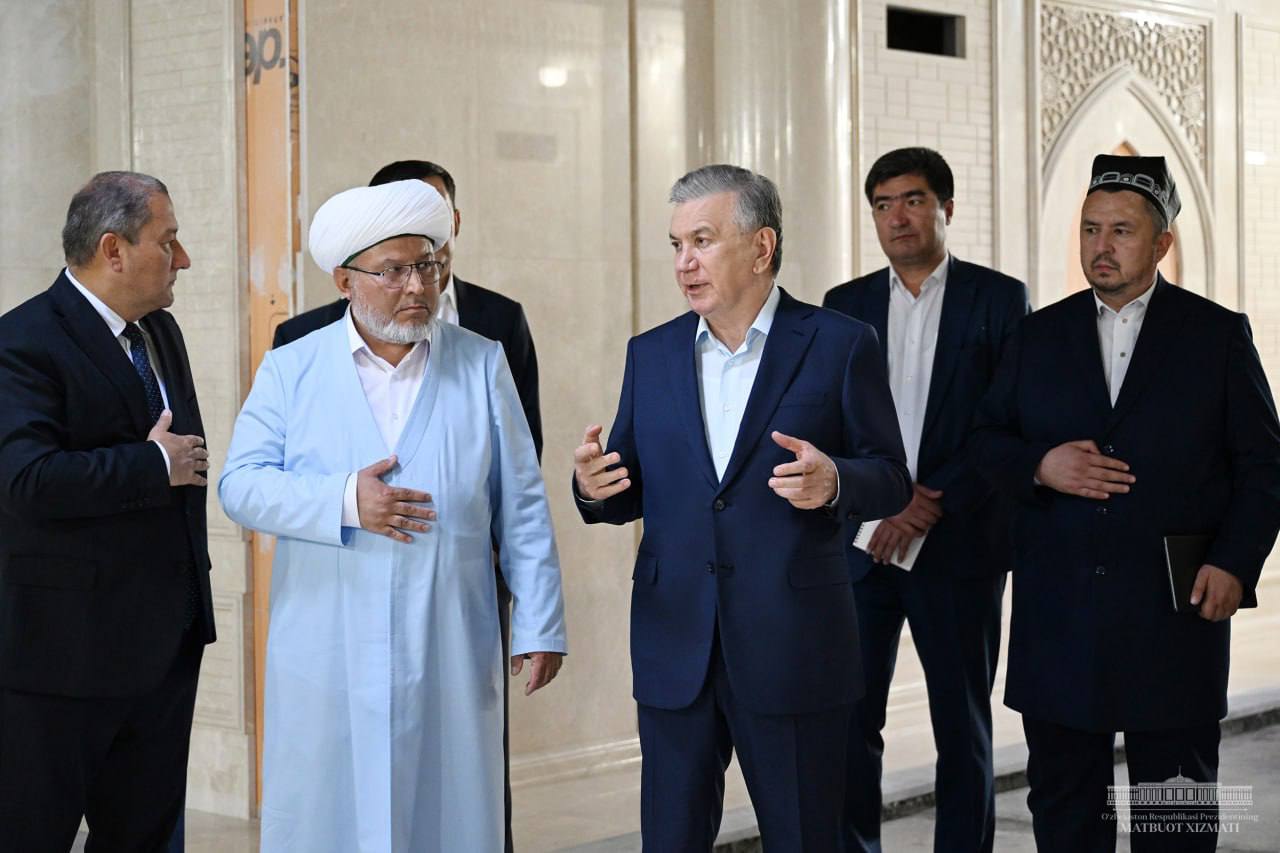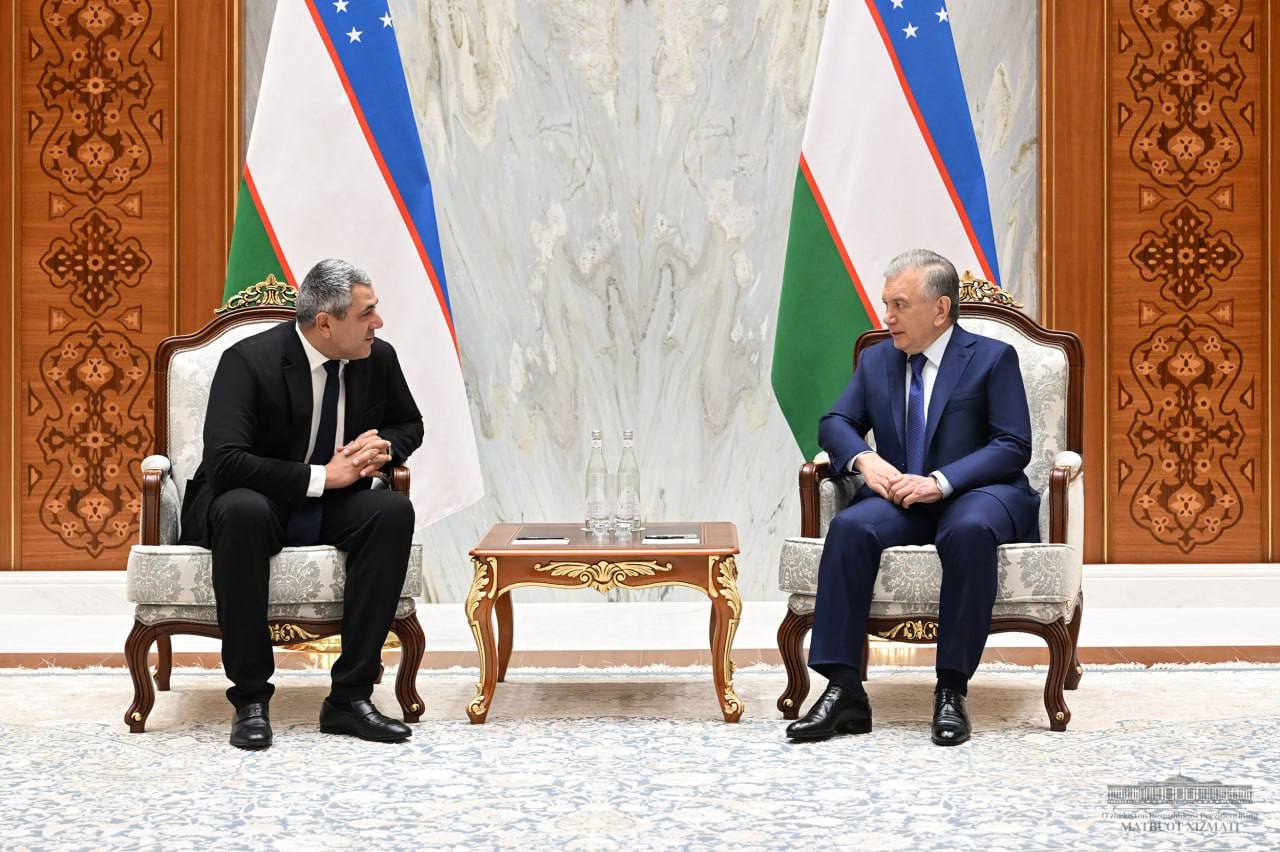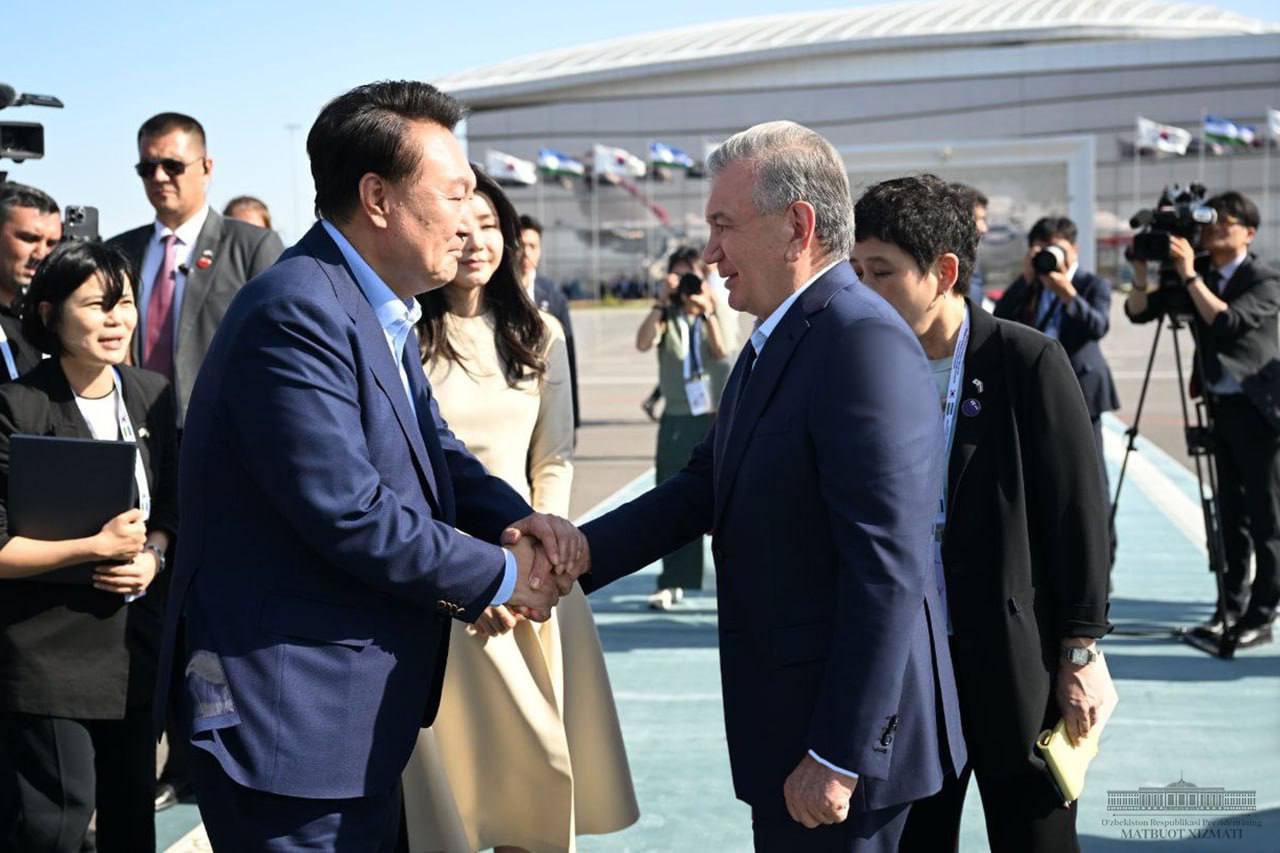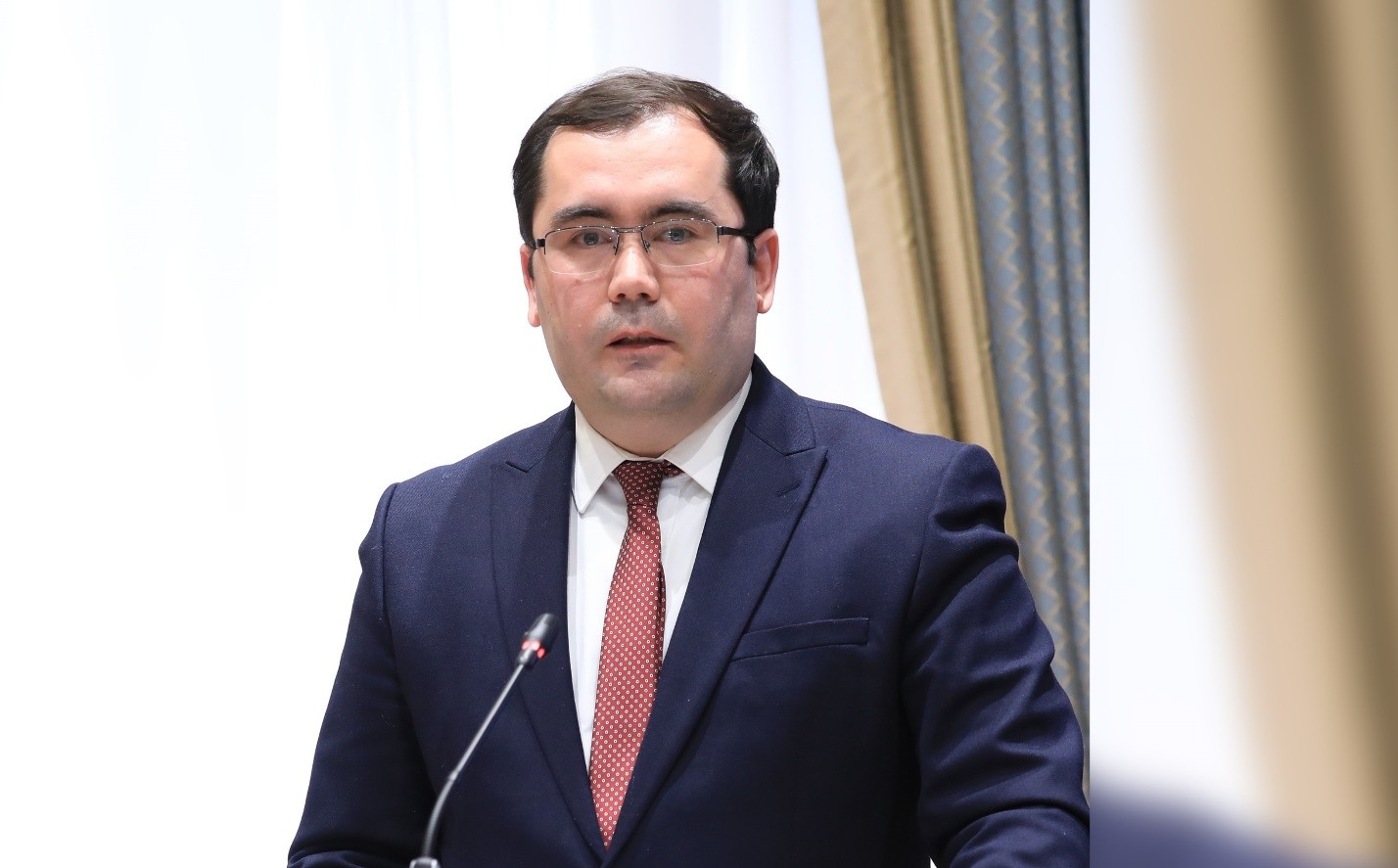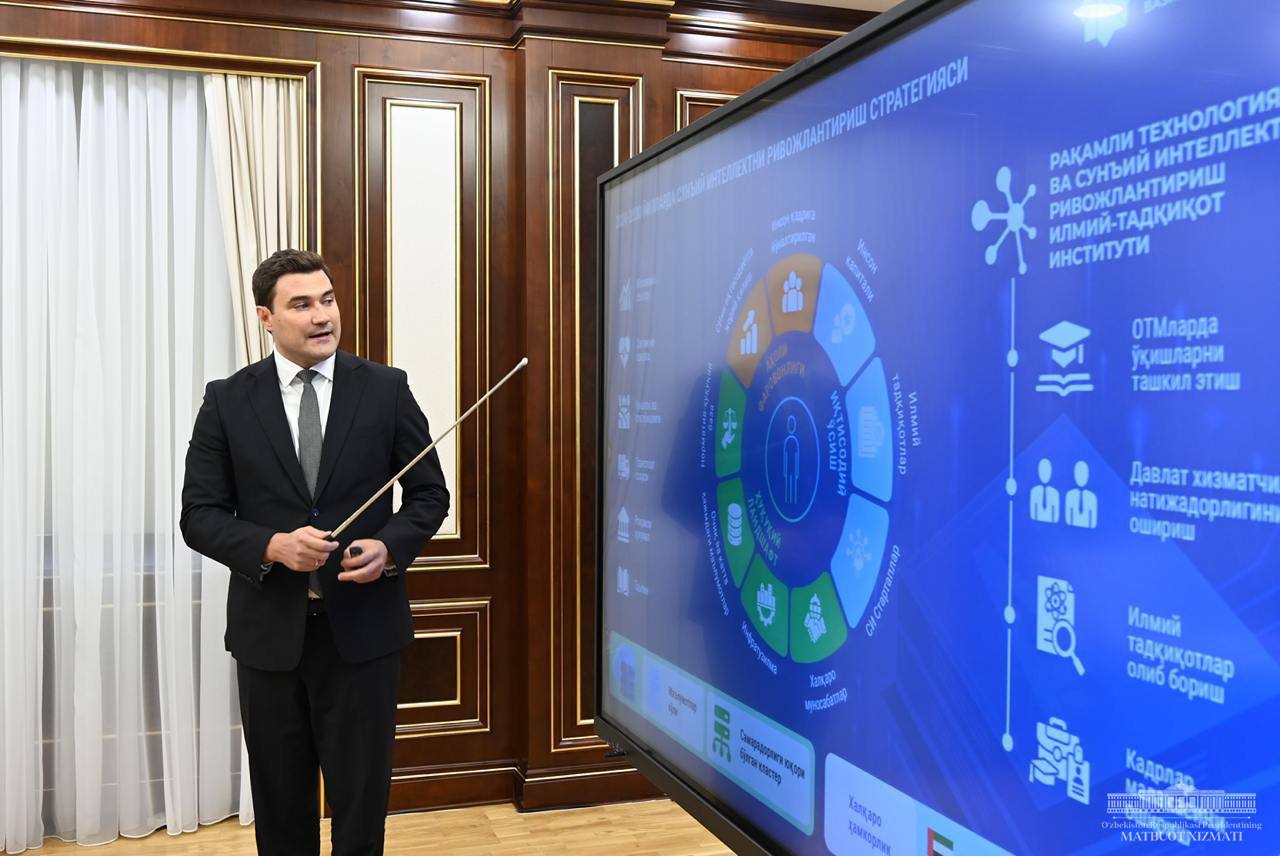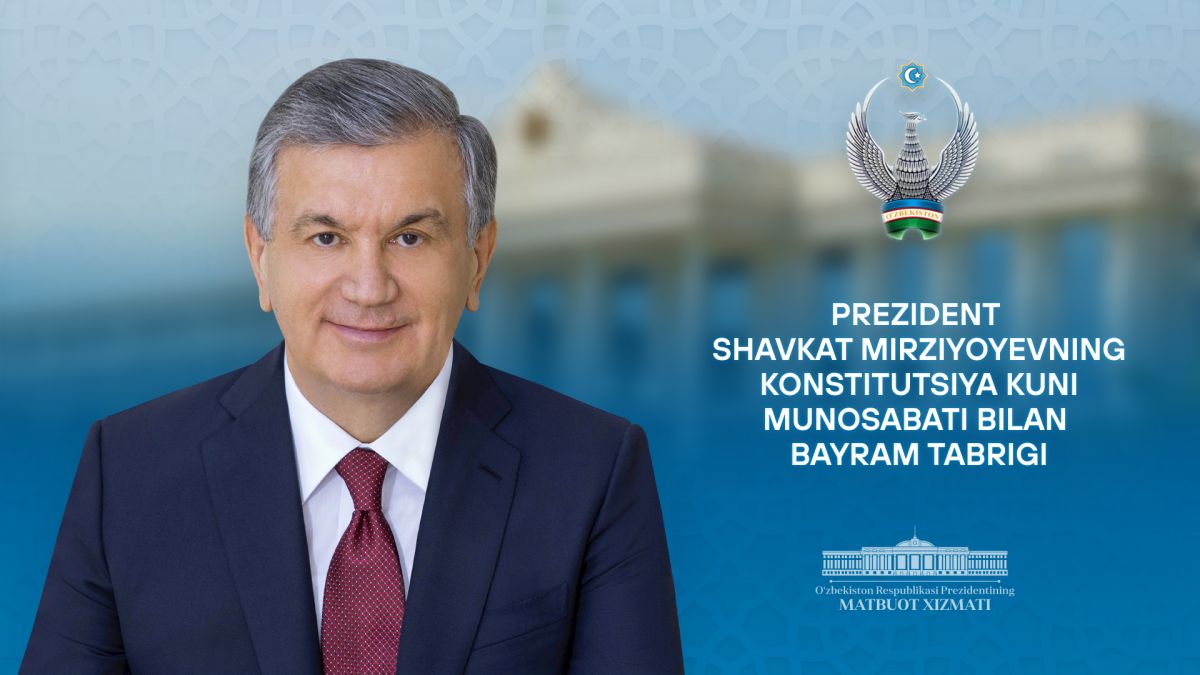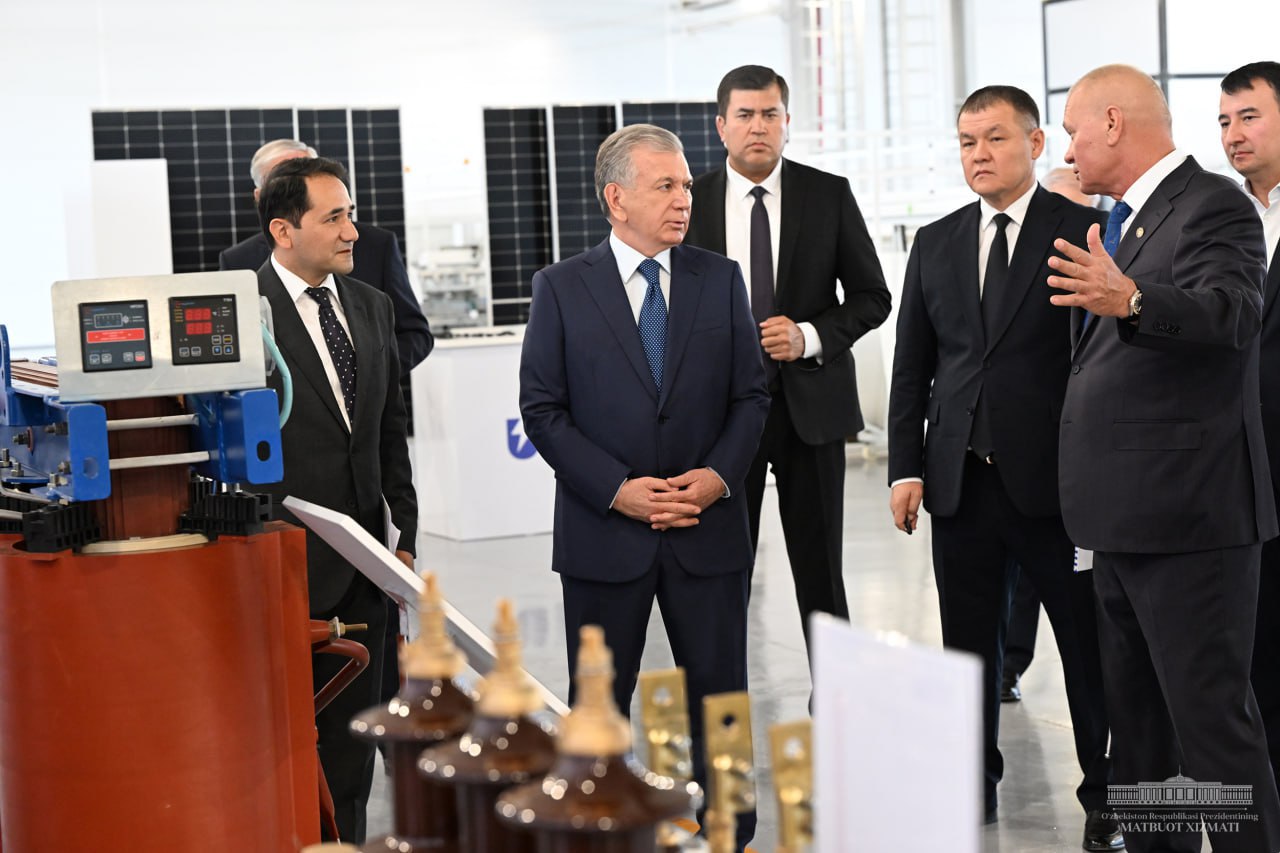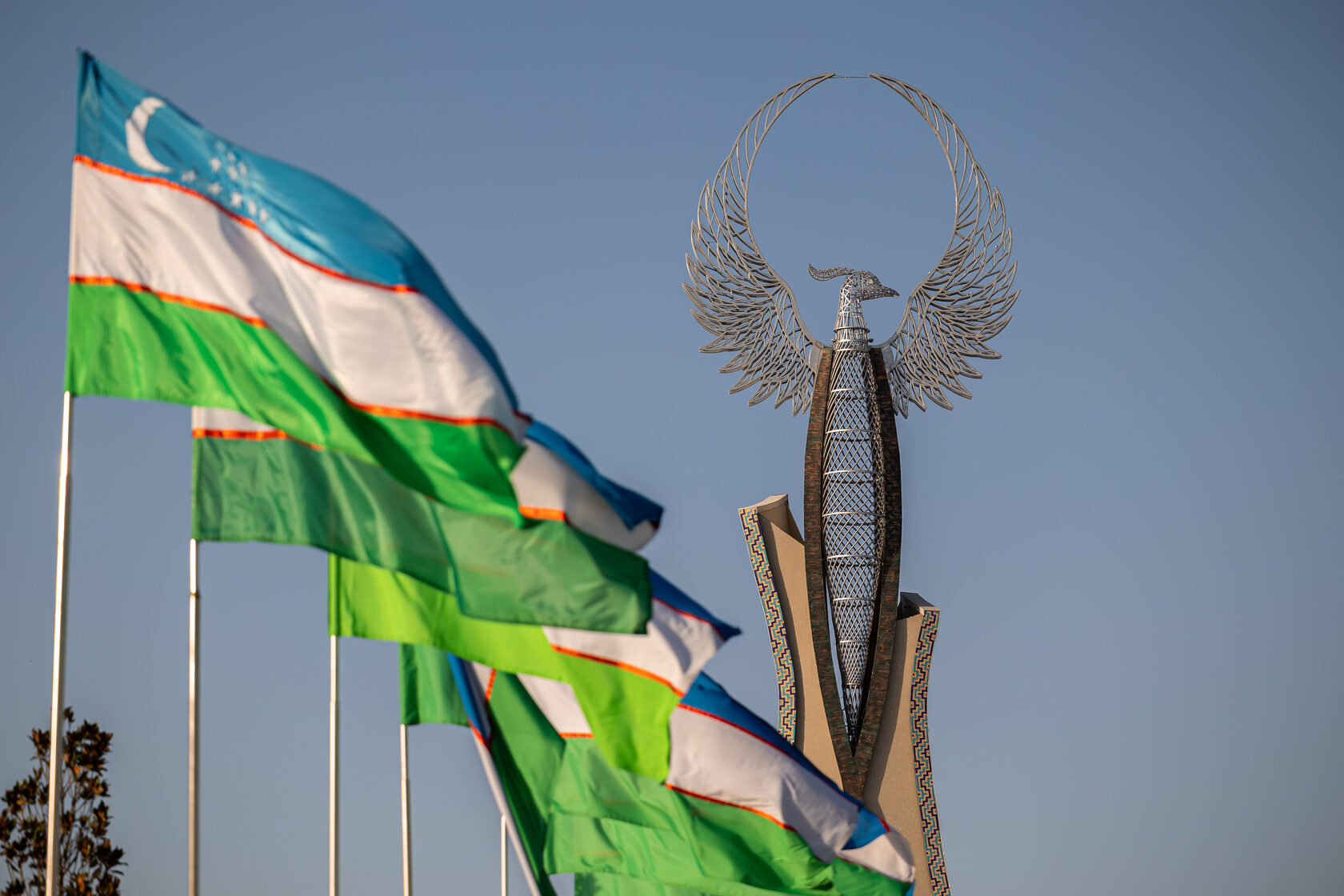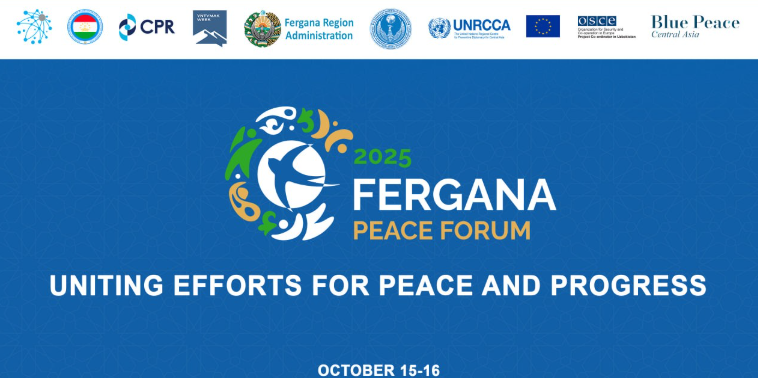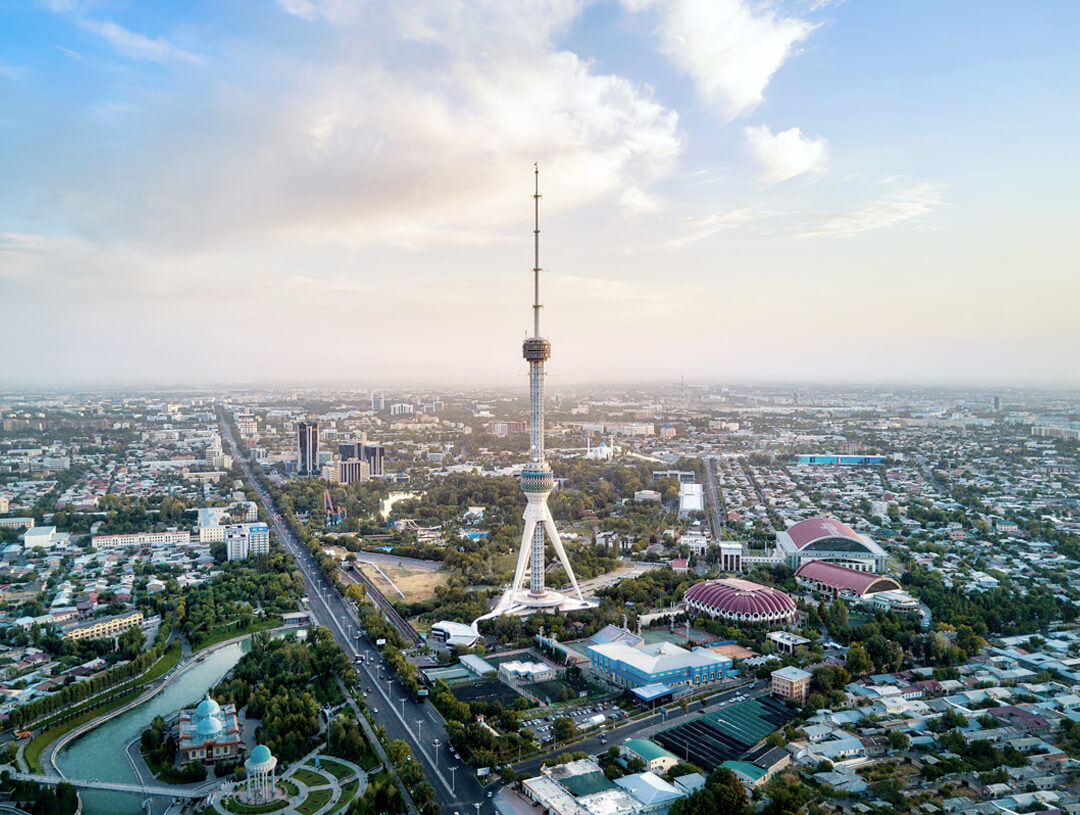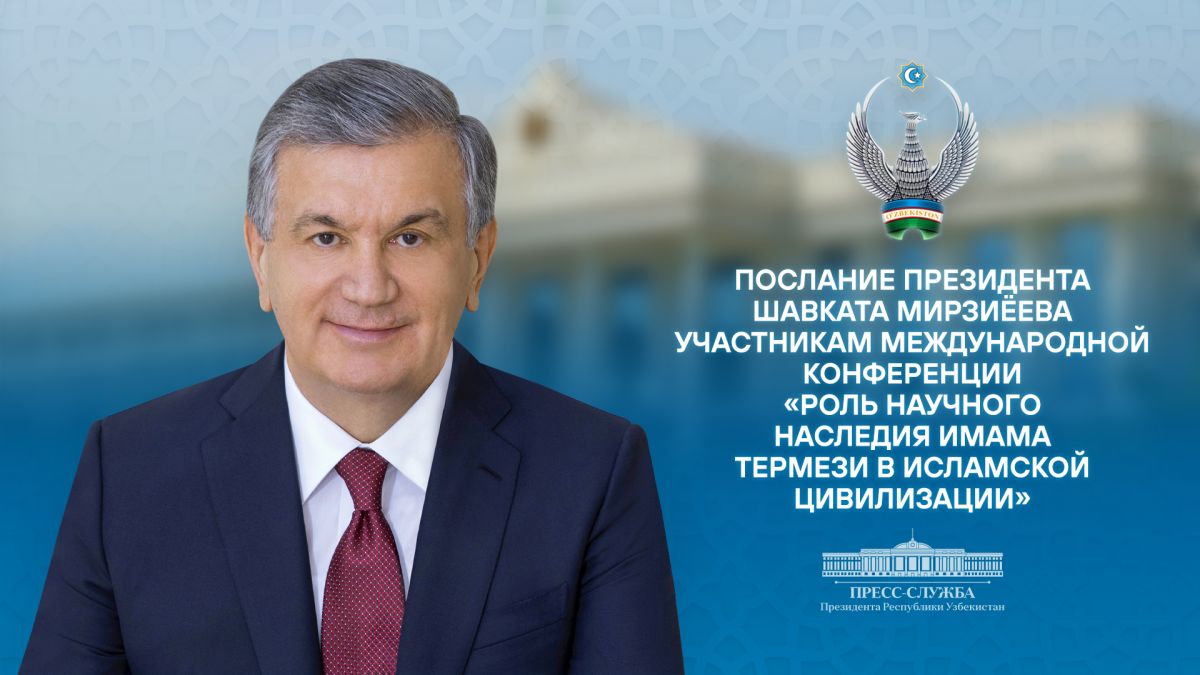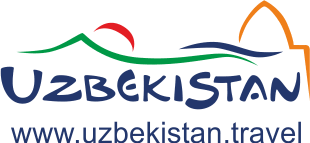Phone
Consular Issues
Phone
Uzbekistan news
We recommend
A New Chapter in Uzbekistan–EU Relations: Why the EPCA Matters
📅 06.11.2025
On 24 October 2025, Uzbekistan and the European Union signed the Enhanced Partnership and Cooperation Agreement (EPCA) — a comprehensive framework that culminates negotiations launched in February 2019 and initialled in July 2022. More than a ceremonial milestone, the EPCA codifies a strategic upgrade in our relationship with the EU. It is broad in scope — nine titles, 356 articles, and 14 annexes — and practical in ambition: to align our cooperation with the realities of a rapidly changing world economy while reinforcing the rule-of-law foundations of sustainable development at home.
The agreement’s timing is revealing. Uzbekistan’s recent balanced, multi-vector foreign policy and people-centred reforms — strengthening the rule of law, expanding public administration openness, and advancing market reforms — have laid the necessary groundwork. These steps in human rights and governance have increased international confidence, enabling a rules-based partnership with Europe. The EPCA is both a vote of confidence in Uzbekistan’s reform trajectory and a tangible roadmap to deliver measurable outcomes.
Economically, the EPCA offers a clear pathway for integration and growth. It promotes approximation to EU norms on technical regulations, product safety, and sanitary and phytosanitary measures. The agreement is designed to reduce non-tariff barriers, simplify border procedures, and make our exporters more competitive in the EU market. It encourages joint ventures and industrial clustering, extends agro-processing and manufacturing value chains, and supports energy efficiency and industrial modernisation. In short: more trade, more investment, and more quality jobs at home.
Human capital is an equally central pillar. The EPCA expands cooperation across education, science, skills development, and public health. It encourages joint university programmes, faculty and student exchanges, and research grants — mechanisms that accelerate knowledge transfer and help align our skills base with the demands of a digital and green economy. The spillovers are immediate and tangible: better public services, higher productivity, and new career pathways for our young people.
The rule-of-law dimension is another strategic gain. Deeper cooperation on judicial reform, anti-corruption, data protection, and cybersecurity increases predictability for investors and protections for citizens. The agreement’s chapter on foreign and security policy expands dialogue on conflict prevention, crisis management, non-proliferation, and export controls. This cooperation supports regional stability, which is essential for long-term growth.
Connectivity is the backbone that makes these ambitions feasible. Through synergies with the EU’s Global Gateway initiative and the Trans-Caspian Transport Corridor, the EPCA supports logistics hubs, border modernisation, and greener infrastructure. Better connectivity means lower trade costs, faster delivery times, and diversified export routes — practical levers for competitiveness. It also enables cooperation on water management, climate adaptation, and resilient energy systems — strategic priorities for a land-linked Central Asian economy.
Critically, the EPCA opens structured avenues for collaboration on critical raw materials needed for the green and digital transitions. This builds on the EU-Uzbekistan memorandum of understanding signed in 2024. It creates opportunities to upgrade domestic standards, attract responsible investment, and join higher segments of global value chains, while maintaining environmental and social safeguards.
Beyond the text, the joint statement issued at the signing underscores a shared commitment to the UN Charter and to the principles of independence, sovereignty, and territorial integrity — principles that guide our positions in international fora. It also welcomes the outcomes of the EU–Central Asia Summit, including plans for a Central Asia–EU Economic Forum and a Trans-Caspian Connectivity Investors Forum in Tashkent in 2025. In short, the EPCA is embedded in a wider, forward-looking regional agenda.
In practical terms, success requires implementation of three clear priorities: coordinated institution building, enhanced business support, and transparent, data-driven tracking. These will ensure commitments translate to outcomes.
First, institutional coordination. Translating commitments into outcomes requires a whole-of-government mechanism with clear mandates, timelines, and dashboards. A national EPCA coordination council, supported by technical working groups, should steer approximation to EU standards, monitor progress, and troubleshoot bottlenecks.
Second, business enablement. Firms need guidance to navigate new standards and opportunities. An 'EU Helpdesk' for exporters and investors would offer practical advice on certification, rules of origin, and compliance. This would turn legal text into business practice. Expanding the capacity of testing, inspection, and certification bodies will further reduce transaction costs and speed market entry.
Third, open, data-driven delivery. Customs and trade facilitation should be fully digitised through single-window systems and interoperable data exchange. Regular public reporting on milestones — such as education partnerships, financed projects, and adopted standards — will sustain credibility and invite feedback from business and civil society.
The EPCA also aligns with Uzbekistan’s WTO accession path by encouraging market-based reforms and transparent, rules-based trade. As reforms deepen, our economy will see more diversified exports, stronger investor protections, and a more competitive domestic market. These outcomes raise household incomes and expand opportunity.
This agreement is ambitious by design. Ambition alone is empty; execution alone is stagnant. The EPCA combines both — setting a high bar and supplying the means to reach it. By acting decisively, we turn this framework into a catalyst for inclusive growth, institutional maturity, and global credibility.
Ultimately, the EPCA is more than a diplomatic success; it is the engine for Uzbekistan’s reform agenda. By linking citizen welfare, business competitiveness, and international engagement, the EPCA puts us on a path to fundamental transformation. The critical task ahead is to deliver on this promise and make the Uzbekistan-EU partnership impactful and enduring.
By Eldor Tulyakov,
Executive Director, Development Strategy Centre, Uzbekistan
Presentation of measures for the development of artificial intelligence technologies and startup projects was held
📅 14.08.2024
On August 13, President Shavkat Mirziyoyev familiarized himself with a presentation on measures to develop artificial intelligence technologies and IT startups.
Information technologies are developing rapidly in our country and are being introduced into all spheres. As a result, the volume of digital services exceeded 21 trillion soums only in the past period of this year, and by the end of the year it is expected to reach 43 trillion soums. Export of services of the sphere amounted to 367 million dollars. The number of IT park residents increased by 577 and exceeded 2 thousand. The number of young people working in them reached 32 thousand.
This year, more than 100 digitalization projects are being implemented in health care, energy, transport, education, agriculture, water management, construction and others.
Times are changing rapidly. Artificial intelligence and digital technologies are penetrating into all spheres. A number of projects have also been launched in this direction in our country.
For example, “My ID” and “UzFace” solutions have been implemented in more than 70 organizations, banks, marketplaces and payment systems, and the possibility of remote biometric identification of 10 million users has been created. “Uzbekcosmos” with the help of artificial intelligence identified about 43 thousand cases of illegal use of subsoil and unauthorized construction.
The presentation considered measures to develop artificial intelligence technologies in such areas as health care, agriculture, banking, tax, customs.
It was noted that first of all it is necessary to create a legislative base for artificial intelligence. The task was set to develop a strategy for the introduction of artificial intelligence and a two-year program of projects. The Center for Artificial Intelligence Technologies was assigned to be created.
In particular, the need to expand the application of artificial intelligence in banking and finance, training of specialized personnel and professional development of employees was emphasized.
At present, the personnel on artificial intelligence is trained in 4 universities. There is a need for 600 specialists in big data processing and language models. This number will increase many times in the coming years. Taking this into account, the importance of training specialists corresponding to the needs in terms of industries was emphasized.
All leading IT companies of the world started their activities from a startup. We are also taking the first steps in this direction. Last year, the volume of venture investments attracted in such projects amounted to 134 million dollars.
The head of state emphasized that it is time to create broad conditions for venture investments to finance startup projects. In this regard, instructions have been given to develop the startup ecosystem and introduce venture capital financing mechanisms.
Festive greetings to the people of Uzbekistan
📅 08.12.2024
Dear compatriots!
I cordially congratulate you, all our multinational people with the Constitution Day of the Republic of Uzbekistan celebrated on December 8.
Undoubtedly, this year we all feel the significance of this holiday especially deeply. After all, above all, it takes place in the context of historic transformations in the political-legal, socio-economic and spiritual spheres of our life.
It should be emphasized once again that the elections to the Oliy Majlis and local Kengashes, held in the spirit of open and competitive contest on October 27 this year, became an important step towards the implementation of our updated Fundamental Law. As a result of the elections, which vividly demonstrated the high political culture, unity and cohesion of our hardworking and tolerant people on the path of building the New Uzbekistan, a new system of representative power has been formed in the country. Its constitutional rights and powers have been strengthened and its responsibility has increased manifold.
One more important aspect: we have moved from the practice of the recent past, when khokims were simultaneously in charge of local councils, to a new system in which, for the first time, councils are headed by chairmen elected among deputies.
The transfer of more than 30 powers of khokims to local councils testifies to an even broader establishment of the principles of democracy in our society.
In accordance with the constitutional provision that the people are the only source of state power, we will resolutely continue our reforms aimed at expanding the powers of the Parliament and local Kengashes, further increasing their activity, creating the necessary conditions for effective activity, in short, turning them into the true voice of the people.
Dear friends!
Large-scale measures are taken in the country for consistent implementation of the priority principles of ensuring human rights, interests and dignity enshrined in the Fundamental Law.
Thanks to the selfless labor of our people, in recent years the national economy has doubled, the per capita income has reached 3 thousand dollars, the poverty rate has decreased from 23 to 11 percent, the coverage of preschool education has exceeded 74 percent, higher education - 39 percent, and this is undoubtedly a historic result.
In order to dynamically continue the reforms, to apply in practice the norms of the Constitution in the new edition, the issues of entrepreneurship development and, on this basis, increasing the population's income, strengthening the atmosphere of mutual respect and harmony in families and mahallas, and comprehensive support for representatives of the older generation, women and youth will continue to be at the center of our attention.
The Fundamental Law stipulates that Uzbekistan is a social state, therefore, further improvement of cities and villages, construction of new residential buildings, health care, education, culture, art and sports institutions, modernization of road and communication networks, strengthening of targeted social protection will be of paramount importance for us. In particular, the priority task is to increase twofold the amount of funds allocated to the health sector, transition to a health insurance system and provide the population with fully guaranteed medical services.
Within the framework of programs in the field of education, we will bring the coverage of higher education to 50 percent in the coming years. In 2025 alone, 4 trillion soums will be allocated from the state budget for the repair of existing kindergartens and construction of new kindergartens and schools.
Another important area is support for those in need of social protection, for which it is planned to allocate a total of 46.5 trillion soums and lift 1 million citizens out of poverty.
We will also raise to a new level the work on creating even more favorable conditions for persons with disabilities, their socialization, and in general on ensuring inclusiveness in society. Necessary measures will also be taken to reform the pension system.
As you know, the new version of the Fundamental Law for the first time enshrines the rights of citizens in the sphere of ecology, emphasizing the state's obligations to protect the environment and maintain the ecological balance.
We have declared 2025 the Year of Environmental Protection and Green Economy in the country and have set clear objectives in this field. I am confident that this will serve as an important basis for implementing the relevant constitutional norms and principles.
I take this opportunity to urge you, dear compatriots, all our people to take an active part in the development and implementation of the State Program of the coming year.
We have no right to forget that the protection of nature is the protection of the humans, our future. We must protect our priceless wealth - fertile fields, clean springs, rivers and lakes, mountains and plains, create new gardens and parks, green territories, so that our motherland Uzbekistan becomes even more beautiful, and future generations live in a free and prosperous country.
Dear compatriots!
Our Constitution has always been and remains a reliable guarantor of strengthening national independence, preserving peace and stability in the country, interethnic friendship and harmony, ensuring the irreversibility of the ongoing reforms.
We are proud of our Fundamental Law - a vivid symbol and practical embodiment of the legal consciousness and will of the people. I believe that studying every article, every norm of this unique legal document, showing respect for them should become a sacred duty and a life principle for all of us.
I am convinced that by working in good faith, recognizing our responsibility, we will be able to further increase the effectiveness of the reforms carried out and will definitely achieve the great goals before us.
Once again I sincerely congratulate you, dear compatriots, with Constitution Day, wish you all health, peace and prosperity to your families.
May the authority and glory of our Motherland grow!
May the people of Uzbekistan - the creator of all our achievements - be happy!
Shavkat Mirziyoyev,
President of the Republic of Uzbekistan
UN PUBLIC SERVICE FORUM: AN OPPORTUNITY TO SHOWCASE UZBEKISTAN’S REFORMS ON A GLOBAL SCALE
📅 27.05.2025
The President familiarized himself with the new project of the joint venture
📅 19.08.2024
Президент Шавкат Мирзиёев начал свою поездку в Республику Каракалпакстан с ознакомления с промышленным потенциалом региона.
Совместное предприятие “Nukus Eleсtroapparat” было введено в строй в 2017 году, оно производит силовое оборудование для электросетей. В июне текущего года здесь был запущен проект по изготовлению солнечных панелей стоимостью более 10 миллионов долларов. Оборудование было доставлено и установлено из Республики Корея. Производственный процесс полностью автоматизирован. Годовая мощность проекта составляет 273 тысячи единиц.
Это будет способствовать дальнейшему внедрению альтернативной энергетики в нашей стране. На сегодняшний день в различных сооружениях и домах установлены солнечные панели общей мощностью 600 мегаватт. Этот процесс продолжается.
Наряду с локализацией востребованной на внутреннем рынке продукции совместное предприятие получило возможность экспортировать продукцию на 4 миллиона долларов. Обеспечено работой 70 человек.
Глава нашего государства ознакомился с технологическим процессом, побеседовал с работниками. Ответственным лицам даны указания по увеличению количества таких предприятий и производству ими продукции с высоким спросом на рынке.
Здесь же была представлена продукция, производимая предприятиями отрасли.
На самом заводе установлены солнечные панели мощностью 125 киловатт. Полученная электроэнергия используется для внутренних нужд, а излишки реализуются в региональную электросеть.
За последние годы в нашей стране за счет инвестиций в размере 2 миллиардов долларов введены в эксплуатацию 10 солнечных и ветряных станций общей мощностью 2,6 гигаватта. Также ведется работа по 32 "зеленым" проектам мощностью 18,6 гигаватта общей стоимостью 19 миллиардов долларов. В целом к 2030 году намечено довести долю возобновляемых источников энергии в энергетическом балансе до 40 процентов.
How new mechanisms for regulating labor migration work in Uzbekistan
📅 26.07.2024
Labor force migration is a natural process worldwide. In Uzbekistan, purposeful work is being carried out to safely and orderly send such citizens abroad. The Agency for External Labor Migration has sent 70,000 people to developed countries for this purpose in the past two years.
We all know that those who want to work abroad also incur certain expenses. Therefore, migrants partially reimburse the costs of a work visa, travel ticket, foreign language, and qualification assessment. It is established that a citizen who has obtained international or equivalent certification in a foreign language is reimbursed 50% of the language learning costs.
Among all the positive work carried out in this area, there is a noted development of significant cooperation with the International Organization for Migration in protecting migrant rights, as well as with developed countries. Systematic work is underway to develop the Concept of the State Policy of the Republic of Uzbekistan in the field of migration until 2030, envisaging the achievement of criteria for guaranteed equality in the social protection of labor migrants.
Emphasizing that the Ministry of Employment and Labor Relations has established contracts between the External Labor Migration Agency and 25 German companies, Uzbek citizens are being temporarily employed in various fields. Discussions are also underway with another five companies. In the past three years alone, 821 Uzbek citizens have been sent to Germany for temporary work, while 1,670 citizens are currently undergoing training to continue their work activities in this country.
In this way, cooperation in the field of labor migration between Uzbekistan and Germany is actively developing, ensuring the preparation of our citizens for work, providing professional training and language learning opportunities, and creating favorable conditions for employment.
The External Labor Migration Agency has been holding discussions on labor migration issues with several countries in 2024, such as Great Britain, Hungary, and Slovakia, highlighting the increasing importance of these efforts.
In addition to the above, under the initiative of President Shavkat Mirziyoyev, each returning labor migrant is provided with a subsidy of 500,000 soums per month from the Labor Support Fund for one year. It is estimated that approximately 100 billion soums will be allocated to these measures for a year.
Assisting returning migrants in finding employment is also being considered as an important issue, and based on the Saykhunabad experience, financial support is provided for the production of goods and income generation, as well as other types of labor services. Medical facilities may also provide free medical checks for returning migrants and their family members. Additionally, starting from October 15, 2023, "Inson" Social Service Centers have been established in the Republic of Uzbekistan to provide social assistance to children whose parents work abroad, which is a significant step.
It is important to note that today, not only state organizations but also non-governmental organizations play a significant role in regulating and supporting labor migration. In this regard, it is relevant to mention educational courses and service organizations providing assistance in collaboration with the External Labor Migration Agency.
In short, a safe, orderly, and legal system for labor migration has been established in Uzbekistan, creating new mechanisms for citizens wishing to go abroad. It encompasses three main stages: The first stage involves organizing preparatory work for citizens intending to work abroad. Vocational and language training is conducted in 14 "Job Placement" service centers nationwide, 30 vocational training centers, 136 communities, 24 colleges, and 13 technical colleges.
Second stage: Providing legal and social assistance to labor migrants abroad. For this purpose, agencies dealing with labor migration issues have been established in several countries to provide services to Uzbek citizens working abroad. Labor Migration Affairs Attachés have been appointed at Uzbekistan's Embassies.
Third stage: Assisting in the reintegration of labor migrants returning to Uzbekistan. Inspectors at the Labor Support Centers are engaged in activities aimed at the reintegration of labor migrants returning to the country.
In conclusion, it is essential to emphasize that appropriate measures are being taken to ensure suitable working conditions and social protection for Uzbek citizens engaged in labor activities abroad. Collaboration with our foreign partners continues on all relevant migration issues. Systematic efforts are being made to further develop initiatives related to the professional orientation and language proficiency of labor migrants.
Bobomurod Yarashev,
teacherof the University of
Public Safety of the Republic of Uzbekistan
FERGHANA VALLEY: A COMMON VISION OF A STRATEGY FOR SUSTAINABLE DEVELOPMENT AND PROSPERITY
📅 13.10.2025
Annotation. The Ferghana Valley is the historical heart of Central Asia, where a new model of regional cooperation based on trust, good neighbourliness and sustainable development is currently taking shape. The initiative
of the President of Uzbekistan Shavkat Mirziyoyev to hold the Ferghana Peace Forum reflects a common desire among the countries of the region to strengthen mutual understanding and create the area of peace, stability, and shared prosperity.
INTRODUCTION
Historically, the Fergana Valley was a shared space where countries used common resources and people kept close ties. For centuries, the valley was
at the crossroads of key trade routes connecting the West and the East.
The establishment of an atmosphere of good neighbourliness
in the Ferghana Valley reflects positive developments throughout Central Asia. Essentially, this is the result of political will, a concentrated expression
of the joint efforts of the leaders of all five countries to maintain security
and stability in the region.
Holding the Fergana Peace Forum in Fergana on October 15–16, 2025, confirms the statement made by the President of Uzbekistan at the 80th session of the UN General Assembly about the transformation of Central Asia into
an area of peace, friendly relations and partnership.
FROM A ZONE OF TENSION TO A SPACE OF TRUST
In the early years of independence, unresolved border issues and
the existence of numerous ethno-territorial enclaves served as grounds
for viewing the region as a conflict zone.
However, today, thanks to the political will and joint efforts of the leaders
of states, the Fergana Valley, previously perceived as a “powder keg,”
“Achilles' heel,” and “hot spot,” is becoming a symbol of peace, sustainable development, and a space of opportunity.
In recent years, Uzbekistan, Tajikistan and Kyrgyzstan have made significant progress in diplomacy and establishing stable political contacts.
The visits of the countries' leaders and their participation in regional forums and organizations such as the Shanghai Cooperation Organization
and the Consultative Meeting of the Heads of Central Asian States contribute
to the deepening of political and economic ties. The development of bilateral
and multilateral relations in the political sphere has helped to create a solid foundation for regional integration and mutual support.
Moreover, all five Central Asian countries contribute to the sustainable development of the Ferghana Valley. Joint water and energy projects are being implemented. In January 2023, Uzbekistan, Kazakhstan and Kyrgyzstan signed
a “”Road Map” for the implementation of the Kambarata HPS-1 construction project, and in June 2024, an interdepartmental agreement on preparations
for the implementation of the project.
A new phase of regional diplomacy began in 2017 with the election
of Shavkat Mirziyoyev as the President of the Republic of Uzbekistan. Relations
with neighbouring countries reached a qualitatively new level. Dialogue based on the principles of openness, respect, and equality laid the foundation
for long-term friendly coexistence.
Thanks to the political will of the leaders of the three states—Uzbekistan, Kyrgyzstan, and Tajikistan—historic agreements were reached in 2025
with the signing of the Treaty on the Junction Point of the State Borders
of Three States and the Khujand Declaration on Eternal Friendship.
These documents became a symbol of a new era of trust and creative partnership. The treaty legally established the borders of the three states
at a concrete point in the Ferghana Valley.
This breakthrough did not come unexpectedly, without preparatory work. In the preceding months, on March 13, 2025, Kyrgyzstan and Tajikistan signed an important agreement on the demarcation of their common border—the final stage of their long negotiations.
Kyrgyz President Sadyr Zhaparov noted that regional integration continues to develop actively, and the strengthening of cooperation
in all spheres will be the key to sustainable development and prosperity throughout Central Asia.
In turn, Tajikistan President Emomali Rahmon called the development
of relations between the three countries based on the principles of good neighborliness, equality, and mutual respect one of the priorities of Tajikistan's foreign policy.
The international community particularly highlights the indispensable role of Uzbekistan's President Shavkat Mirziyoyev, who initiated a new diplomatic line: "Borders should not divide, but unite our peoples."
This approach creates a model for peaceful transformation, where internal rather than external factors shape the architecture of trust, friendship, and good neighbourliness.
The formation of the area of stability and cooperation in Ferghana Valley was achieved without external involvement, solely through the strong political will of the leaders of the three states, combined with the desire of the peoples
of the region for peaceful coexistence, creating a solid foundation for lasting peace and prosperity.
Ferghana Valley – an “exemplary model” for building inter-state relations in other regions
The Ferghana Valley is one of Central Asia's unique oases – a place where the destinies of the peoples of Uzbekistan, Kyrgyzstan, and Tajikistan have intertwined. More than 17 million people live here, accounting for 20%
of the total population of Central Asia, which is around 83 million.
Today, the valley is gradually becoming a symbol of the new Central Asia – a region where borders are not barriers, but bridges of interaction.
The development of transport, trade, and humanitarian ties between Uzbekistan, Kyrgyzstan and Tajikistan paves the way for the formation of a single space
for interaction in the name of common prosperity.
Joint infrastructure and economic projects, the restoration of roads
and railways, the development of border logistics hubs, and the modernization of checkpoints are creating conditions for the free movement of people, goods, and ideas.
Communications between the Ferghana Valley and the outside world are actively developing. Today, it is being integrated into international multimodal transport corridors and is gradually regaining its status as an interregional transit hub connecting East and West.
In this regard, the China-Kyrgyzstan-Uzbekistan railway project is of great importance. If implemented, it will have a multiplier effect on the economies
of all countries in the region.
The railway will provide access to the ports of the Persian Gulf
and the Pacific Ocean, open up new markets, thereby diversifying the economy and creating new jobs.
Visa regimes are being simplified and the throughput capacity at border crossing points is being improved, which will encourage more mutual travel
by citizens.
Uzbekistan maintains a visa-free regime with all Central Asian countries except Turkmenistan. In particular, there are currently 17 border crossing points between Uzbekistan and Tajikistan and 25 between Uzbekistan
and Kyrgyzstan. In 2016, there were only 13 between Uzbekistan
and Kyrgyzstan, and all of them operated with restrictions. For example, currently, up to 20,000 people pass through the Dustlik checkpoint
on the Uzbek-Kyrgyz border every day, which is 100 times more than in 2016.
At the same time, the number of vehicles passing through has increased tenfold, reaching 700 per day.
The Mingtepa and Khanabad border checkpoints were opened in 2023, and the Uchkurgan and Karasu checkpoints in 2024. These points had been closed since 2009-2010.
Today, citizens of Uzbekistan and Kazakhstan can travel to each other's countries for up to 30 days without registration. A visa-free regime
for up to 60 days has been established between Uzbekistan and Kyrgyzstan,
and since September 1, 2023, it has been possible to use ID cards
(instead of foreign passports) for mutual travel between the two countries.
The time required for goods and people to cross the border has been reduced to an unprecedented eight minutes. In turn, citizens of Tajikistan
and Uzbekistan can stay in each other's territory for up to 30 days
without a visa. This, in turn, contributes to the intensification of cooperation
and improved mutual understanding between the peoples of the Fergana Valley.
On the whole, a common space is forming in the Ferghana Valley, as it has throughout history. The restoration of the valley's interconnectedness contributes to the stability and sustainable development of the entire region.
The international community's keen interest in these processes confirms that Central Asia is becoming an important center for the formation of a culture of peace. The initiatives put forward by Uzbekistan have received support
from the UN, OSCE, EU, and other international partners, which strengthens
the legitimacy and sustainability of regional efforts.
The Ferghana Peace Forum has a special place in this process—it's not just a diplomatic meeting, but a platform for developing a new philosophy
of regional cooperation. This forum brings together political leaders, experts, and public figures, offering an open dialogue on strengthening peace, trust,
and sustainable development in Central Asia.
The event will enable the countries of the region to independently shape their own architecture of stability and sustainable development, based
on mutual respect and the desire for a better future for new generations.
CONCLUSION
The Ferghana Valley is gradually transforming into a space of peace
and harmony, where peoples find common ground and jointly strengthen
the region's stability.
The establishment of the atmosphere of friendship and
amicable relations in the Ferghana Valley shows that, even in today's turbulent global environment, ensuring stability in the region is an achievable goal.
This process requires patience, wisdom, and willingness to make reasonable compromises. Uzbekistan, Kyrgyzstan, and Tajikistan have demonstrated these qualities and their ability, despite complex challenges,
to unite for common goals such as strengthening security and sustainable development.
In turn, the Fergana Peace Forum is called to become a permanent platform aimed at strengthening dialogue and trust, ensuring sustainable development of the Ferghana Valley, unlocking economic potential,
and strengthening cultural and humanitarian ties. This meeting reflects the unity of the countries in the region, which are determined to build a common future together.
Authors: Diloram Mukhsinova and Bekhzod Alimjanov,
senior researchers at the Center for Foreign Policy Studies
(Uzbekistan)
The principle of “New Uzbekistan - a social state” implies comprehensive support for the population
📅 29.07.2024
Social policy in our country contains a wide range of issues on poverty alleviation, job creation, and support for socially vulnerable groups of the population. Investments in human capital are both a contribution to the social and economic sectors of the country's development. Moreover, according to a study by the Institute of Macroeconomic and Regional Studies under the Cabinet of Ministers of Uzbekistan, improving the quality of human capital leads to an increase in the inflow of foreign direct investment by 0.51 percent.
Article 1 of the Constitution of the Republic of Uzbekistan in the new wording, adopted following the results of the national referendum, once again confirmed the commitment and orientation of the state to care for its citizens from the first days of their birth, regardless of their social status. It should be noted that the state did not come to this principle immediately, as the domestic social policy was formed step by step, i.e. in the process of long negotiations, permanent compromises and economic opportunities.
The enshrinement in the Constitution of the statement that Uzbekistan is a sovereign, democratic, law-based, social and secular State increases its social obligations.
It should be noted that a social state in the general sense guarantees quality education, qualified medical care, comprehensive support for families, children, women, the elderly and persons with disabilities, provides housing and employment for those in need, creates safe working conditions and reduces poverty.
All of the above-mentioned state guarantees began to be reflected in the last decade of our country, which entered the world history as New Uzbekistan.
First, the Strategy of Action on Five Priority Areas of Development of the Republic of Uzbekistan in 2017-2021 and the Strategy for the Development of New Uzbekistan for 2022-2026 identify as priority tasks: building a humane state by elevating human honor and dignity and further developing a free civil society; turning the principles of justice and the rule of law into a fundamental and necessary condition for the country's development; accelerating the development of the national economy and ensuring high growth rates; carrying out the development of the country's economy; and ensuring the development of the national economy.
Secondly, the Ministry of Employment and Poverty Reduction has been established, the Ishga Markhamat monocenters have been launched, the “iron” “women's” and “youth” notebook systems have been set up, one hundred percent pensions are paid to working pensioners, the Social Protection Strategy of the Republic of Uzbekistan has been approved, and the problem of poverty in the country has been recognized. Moreover, the post of assistant khokims has been introduced, who are responsible for poverty reduction, developing entrepreneurship, organizing jobs and increasing the incomes of citizens. Most importantly, a new system of caring for the population has been created.
President Shavkat Mirziyoyev chaired a video conference call on May 15, 2023 to discuss measures to reduce poverty and provide employment. Following the recognition of the existence of poverty in the country, a system to reduce it was introduced. At the beginning of last year, all districts in Uzbekistan were divided into five categories and given differentiated benefits based on the pace of socio-economic development. As a result, one million people have been lifted out of poverty.
Thirdly, education and medicine are the most important and comprehensive social spheres. In order to accelerate reforms and improve efficiency in these sectors, relevant project offices have been established.
Undoubtedly, investment in human capital is the best contribution to the future. In this regard, unprecedented reforms have been carried out in the area of continuous improvement of the system of continuous quality education and training of qualified personnel. As a result, preschool education coverage has increased from 27 to 74 percent, 11-year compulsory schooling has been resumed, the workload of school teachers has been optimized, and forced labor has been abolished.
Changes in the higher education system in recent years have also shown significant positive results. As a result, enrollment in higher education has increased from nine to 42 per cent, and the number of higher education institutions has grown from 77 to 212.
Our country pays great attention to the medical sphere, which directly affects the quality of life. Over the past seven years, the financing of the health care system has increased from 5.9 trillion to 33.5 trillion soums, i.e. six times. Hospitals are being equipped with modern equipment and new facilities are being built. In order to bring medicine closer to the people, on-site screening examinations are being conducted.
It should be noted that Uzbekistan is working on targeted support for socially vulnerable segments of the population. This is evidenced by the addition of a new wording to article 57 of the Constitution on State measures aimed at improving the quality of life of socially vulnerable categories, creating conditions for their equal participation in public and State life with other citizens, and expanding their opportunities to independently provide for their basic living needs.
One of the main innovations is article 42 of the Basic Law, which states that the minimum wage shall be determined taking into account the need to ensure a decent standard of living. From December 1, 2023, the minimum wage is equal to 1.05 million soums, while the cost of consumer expenditures is set at 568 thousand soums per person per month.
In addition, according to the Presidential Decision “On measures to further improve the system of social services and assistance to the population” of September 28, 2023, a new system of social assistance by the employees of the social service centers “Inson” of the National Agency for Social Protection has been introduced in 28 districts (cities) on a pilot basis since October 15 last year. The employees are responsible for keeping records and register of lonely, elderly and disabled persons in need of care, which helps to develop a plan of individualized social services by taking into account the degree of need for care. At the same time, assistance to the lonely elderly included in the Unified Register of Social Protection is provided on the basis of a contract.
Food security in Uzbekistan begins with support for agricultural producers
📅 16.09.2025
Starting January 1, 2026, Value-Added Tax will be exempted for Farmers and Dehkan producers
С 1
Almost half of the population of the Republic of Uzbekistan lives in rural areas. Millions of hardworking individuals in these communities play a crucial role in ensuring the country’s food security and establishing a solid foundation for the export of agricultural products. The nation’s development cannot be limited solely to urban centers; it is equally important to ensure that life in rural and peripheral regions is comfortable and sustainable.
The care for rural residents and the stimulation of their activities merit special attention from both the state and society. Governmental support measures have become pivotal in strengthening the agricultural sector.
However, the agricultural industry still faces significant challenges, including high tax burdens and limited access to financing, which contribute to the expansion of the informal economy. According to various estimates, up to half of agricultural producers operate outside the legal framework, resulting in reduced profitability and hindering sectoral development. Without genuine incentives to transition towards a formal economy, the agrarian sector’s capacity for investment and modernization will remain constrained.
In this context, the introduction of a zero rate of Value Added Tax (VAT) starting January 1, 2026, for farmers and dehkan producers selling their own products—including vegetables, fruits, meat, milk, eggs, and other food items—is a timely and significant measure. Producers of grain and cotton are excluded from this provision, as these sectors are regulated through state-managed clusters.
The existing practice of VAT refunds on expenses related to the production of seeds, fertilizers, fuel, logistics, electricity, and other operational costs will remain in place. As a result, farmers are expected to save up to 700 billion Uzbek soms annually.
The zero VAT rate will reduce the tax burden, increase farmers’ net income, and enable the allocation of additional funds toward modernization.
According to projections, farm profitability is expected to rise from 5–7 percent to approximately 15 percent. This measure will also facilitate more accurate planning of subsidies and incentives.
Another positive impact will be the growth of domestic processing industries. When products are processed locally, demand for investment in processing facilities and export logistics chains increases, leading to job creation and improved working conditions.
The reorientation of agriculture towards food crops has been one of the strategic priorities pursued in recent years.
Areas allocated to cotton and grain cultivation are being reduced, while orchards, vineyards, and vegetable crops are being developed instead. Approximately 1,500 food production projects have already been implemented, with a total investment of around one billion dollars.
The introduction of a zero VAT rate will further stimulate processing and export activities, strengthening the potential of the agro-food sector and enhancing the competitiveness and attractiveness of its products on the international market.
For farmers and dehkans, this presents an opportunity to retain a significant portion of their income. The savings can be directed towards farm development, improving working and living conditions, and modernizing production processes. Rural areas will benefit from job creation, technology influx, higher product quality, and a favorable environment for sustainable development.
For the state, this translates into a reduction of the shadow economy, increased transparency in reporting, and more accurate planning of support measures, tax incentives, and development programs. For society at large, it means access to higher quality and more affordable food products, enhanced resilience of the rural economy, and the strengthening of domestic agro-industrial value chains.
Nadira RASHIDOVA,
Member of the Legislative Chamber of the Oliy Majlis.
The President of Uzbekistan noted the priorities of expanding partnership with the World Bank
📅 08.10.2024
President of the Republic of Uzbekistan Shavkat Mirziyoyev met with World Bank Vice President for Europe and Central Asia Antonella Bassani on September 30.
The sides discussed topical issues of further expansion of strategic cooperation with the World Bank Group and support of this leading international financial institution to the ongoing reform program in New Uzbekistan.
At the beginning of the meeting, Vice President Antonella Bassani conveyed to the head of our state sincere greetings and best wishes of World Bank President Ajay Bangui.
During the conversation, the current high level and fruitful nature of bilateral cooperation were noted with deep satisfaction.
In recent years, our country has become one of the largest partners of the Bank - the portfolio of projects has increased several times and now exceeds 12 billion dollars.
The World Bank is supporting the implementation of important reforms aimed at ensuring the sustainability of economic and social sectors. The Bank's regional office in Tashkent has been operating since July this year.
Such areas as poverty reduction, transformation of state-owned enterprises and banks, decarbonization, support for WTO accession and others have been identified as priorities for further expansion of the partnership.
Special attention was paid to the programs of urbanization and integrated development of regions, modernization of energy and irrigation infrastructure, support to the private sector.
There was also an exchange of views on the promotion of regional projects.
Uzbekistan: a focus on promoting reading
📅 24.06.2024
Libraries play a key role in education, culture, and community development, providing an invaluable resource for accessing knowledge, preserving cultural heritage, and promoting intellectual growth. In the modern information society, they remain an important institution that promotes the education and self-development of people of all ages.
President Shavkat Mirziyoyev emphasised during the opening ceremony of the People's Library under the President of the Republic of Turkey in Ankara: “Intellectual potential, high morale is what makes a nation strong. The source of this invincible power is books and libraries – the great invention of mankind”.
At the present stage, education has become one of the most important areas of state policy. The government of the Republic of Uzbekistan pays special attention to the development of this sphere, recognizing its key role in the prosperity of the country. In recent years, the republic has achieved significant success in the educational domain. These achievements are aimed at modernizing the system, improving the quality of education and training, and expanding access to education for all citizens of the country.
At the same time, special attention is paid to the promotion of reading and the fostering of the reading culture of the population. And in the Presidential Decree adopted on September 13, 2017, “On the program of comprehensive measures to develop the system of publishing and distributing book products, improving the culture of reading”, clear goals are outlined for the creation of an effective system of information and library services to the population, which served to move this area to a new stage of development and contributed to raising the level of social and information culture and the role of libraries, made it possible to develop and implement modern innovative and educational technologies that increase the competitiveness of Uzbekistan in the world market.
In addition, the Presidential Decree “On further improvement of information and library services for the population of the Republic of Uzbekistan” was adopted on June 7, 2019. The main goals of the decree are:
- improving the regulatory framework in order to ensure high-quality social guarantees to the population for information and library services;
- development of information and library institutions taking into account modern requirements;
- promoting the sustainable development of information and library services the for population in the regions;
- strengthening the material and technical base of information and library institutions;
- development of public-private partnerships in the library sector, a network of private and electronic libraries;
- expanding cooperation with Internet resources that specialize in distributing electronic books to improve the efficiency of libraries and the efficiency of servicing (including paid) users;
- ensuring the safety of information and library institutions and the safety of information and library collections as part of the national and world cultural heritage;
- formation and enhancement of the information culture of society, sustainable interest in national history and culture, enhancement and promotion of a reading culture;
- staffing information and library institutions with qualified specialists.
The adoption of this decree expands the range of services in the country, including access to electronic resources and holding cultural and educational events, as well as improving staff qualifications and introducing modern methods of user service. In addition, these changes not only contribute to the development of the information society and economic growth by attracting investment in education and culture, but also promote the formation of a literate and informed society, which is an important step in the development of the country.
The Resolution of the Cabinet of Ministers dated December 14, 2020 approved the National Program for the Development and Support of a Reading Culture for 2020-2025, which includes the publication of quality books that meet the spiritual, educational, artistic and aesthetic needs of the population; supporting the activities of publishers and artists, publishing children's literature; translation of the best examples of national and world literature; simplification of the organization of book sales; improving the delivery system for newly published books and distribution of information sources; expansion of international cooperation in the field of online ordering of foreign work, their delivery and distribution.
In turn, it should be noted that within the framework of the “Uzbekistan - 2030” Strategy, special attention is paid to the popularization of masterpieces of Uzbek and world literature. The country's leadership strives to instil in citizens a love of reading and ensure access to libraries and information services for everyone.
The Strategy “Uzbekistan - 2030” puts forward such main goals as increasing the number of young book lovers to five million, the annual creation of 100 works of art and 50 books for children and adolescents, the publication of the multi-volume book “Uzbek adabiyoti khazinasidan” (“From the Treasury of Uzbek Literature”), the 100-volume book “Jakhon Bolalar Adabiyoti Durdonalari” (“Pearls of World Children’s Literature”) in Uzbek, as well as the digitalization of a book fund of almost 40 million books.
On November 28, 2023, there was signed the Presidential Decree “On measures to implement the project “A Thousand Books for Youth”, aimed at creating a system for translating books popular in the world into Uzbek, that contribute to increasing the intellectual and scientific potential of the younger generation.
At the same time, within the framework of the “Olympiad of Five Initiatives”, the following 5 projects in the field of reading and intellectual games are annually implemented: “Young Reading Family”, “Poetry Competition”, “Young Reader”, the intellectual game “Zakovat” and the project “Example of Foreign Languages”. These projects increase the interest of young people in reading books and help expand logical thinking and knowledge through intellectual games.
The “Young Reader” and “Young Reading Family” competitions are important events held to promote reading, the spiritual enrichment of youth, and increase their intellectual potential. This competition serves to increase interest in books among young people and expand their knowledge and horizons.
Also, within the framework of the project “A Thousand Books for Youth”, the Agency for Youth Affairs will have to work on acquiring rights to use works from authors, translating them into Uzbek, and preparing for printing and publishing books on the basis of a state order and at the expense of the State budget (with the exception of books, published for state higher educational institutions).
Two stages have been established for translation into Uzbek and the publication of popular books in the world. First: a preliminary list of books is formed annually by the Expert Council. Second: the preliminary list is posted in the information systems of the Agency for Youth Affairs for selection by the population by voting, and thus the final list is formed.
The list of books published annually must include at least 20 percent of popular science works. The rights to the works prepared for publication will belong to the Agency for Youth Affairs, which will provide them free of charge to publishing houses.
It is also planned to create and ensure the continuous operation of a special mobile application that accumulates literature in the Uzbek language and provides the population with free access to a wide range of information. On the recommendation of the Expert Council, the works will be distributed to information and library institutions (including libraries of public and administration authorities), and electronic versions will be donated free of charge to the Alisher Navoi National Library of Uzbekistan and the relevant institutions of the Academy of Sciences of the Republic of Uzbekistan for wide use by readers.
The necessary spiritual, legal, material, and technical basis has been created in the Republic to develop children's literature and improve the quality of textbooks and teaching aids. The country's publishing houses have increased the publication of works by authors of world and Uzbek children's literature. In accordance with a number of documents adopted to promote book reading, systematic measures are being taken in all regions to popularise literature among children and adolescents. Over the past four years, a number of presidential decrees and government resolutions have been adopted to guide the country's publishing, printing, and bibliographical information institutions.
Thus, bibliographical information services play a critical role in ensuring public well-being by providing citizens with easy access to information, knowledge, and culture. In addition, the development of digital services, collaboration with communities, and the use of new technologies strengthen the role of libraries as centres of learning, information, and communication. This helps to enhance the capabilities of people and stimulates their desire for education. The development of the potential of information and library services contributes to lifelong learning, self-improvement, cultural and spiritual enrichment of the population. This is of crucial importance for modern society.
Ramzidin Nuridinov
Expert of the Development Strategy Center.
Participants of the International Scientific and Practical Conference “The Role of Scientific Heritage of Imam Termezi in Islamic Civilization”
📅 21.10.2024
Dear forum participants!
Dear guests!
I sincerely congratulate you, all those who make a worthy contribution to the development of the holy religion Islam, on the opening of the international scientific-practical conference dedicated to the study of the scientific heritage of the great muhaddis Imam Termezi in the homeland of outstanding Muslim scholars - in Uzbekistan.
It is gratifying that today's authoritative forum is attended by renowned specialists in the field of Islamic studies - prominent scholars and ulema, experts and researchers. In your person we see the continuers of the good traditions of the great thinkers who are the pride of the Muslim world - Imam Bukhari and Imam Termezi.
May the Almighty bless you, I wish you happiness and prosperity!
Dear friends!
Speaking about our outstanding ancestors-scientists, bright representatives of the Islamic world of the Middle Ages, we, of course, among the first names of Hazrat Imam Termezi.
We are rightfully proud of this incomparable person, the favorite disciple of the great Imam Bukhari, who was honored with the high rank of Sultan of Muhaddis, who has been glorifying our region for twelve centuries with his undying works and high human qualities.
Imam Termezi is recognized in the world as one of the six great muhaddis, his collection of hadiths is among the most revered and reliable sources, and the Muslim Ummah bows before the name of this outstanding man.
Another practical expression of such recognition is the fact that the topic for discussion at today's conference was the unique works of Imam Termezi “Ash-Shamoil al-Muhammadiyya” and “Sunani Termiziyya”, as well as important issues concerning the scientific heritage of the Ulema Termezis and its relevance today.
Dear participants of the conference!
In recent years, a great work has been carried out in our country to study and popularize the invaluable heritage of many of our thinkers-theologians who made a great contribution to the development of the Islamic religion, to honor their memory, to improve the places associated with their life and activities, including Imam Termezi.
It should be noted that a magnificent memorial complex has been erected in his honor in Sherabad district of Surkhandarya province, and an international research center, a specialized Islamic secondary school and an Islamic institute have been opened in the city of Termez bearing his name.
These institutions, together with the International Islamic Academy of Uzbekistan, the Centre for Islamic Civilization, the Hadith Scientific School and other religious educational and research organizations, are studying the rich heritage of Imam Termezi in a comprehensive and in-depth manner. In particular, works of the thinker are published, scientific researches, books and artistic works are dedicated to him.
I hope that after familiarizing yourselves with the work carried out in this direction within the framework of the conference, you will express your opinions and proposals on further activation of cooperation in this field.
We, the heirs of great scientists, emphasizing that Islam is a religion of peace, goodness and humanism, on the way of realization of good hopes and aspirations of mankind, consider it our most important duty to jointly enrich this incomparable spiritual treasure and preserve it for future generations.
I express my deep gratitude to the scientists and ulema of our country and to you, dear guests, to all figures of science who show real dedication for such a noble goal.
The doors of the leading research and educational institutions of Uzbekistan are always open for you.
Greeting you once again from the bottom of my heart, I wish you health, new achievements in your scientific and creative activities, and a successful conference.
Shavkat Mirziyoyev,
President of the Republic of Uzbekistan

